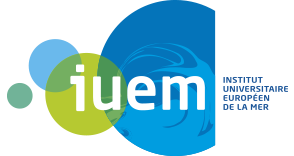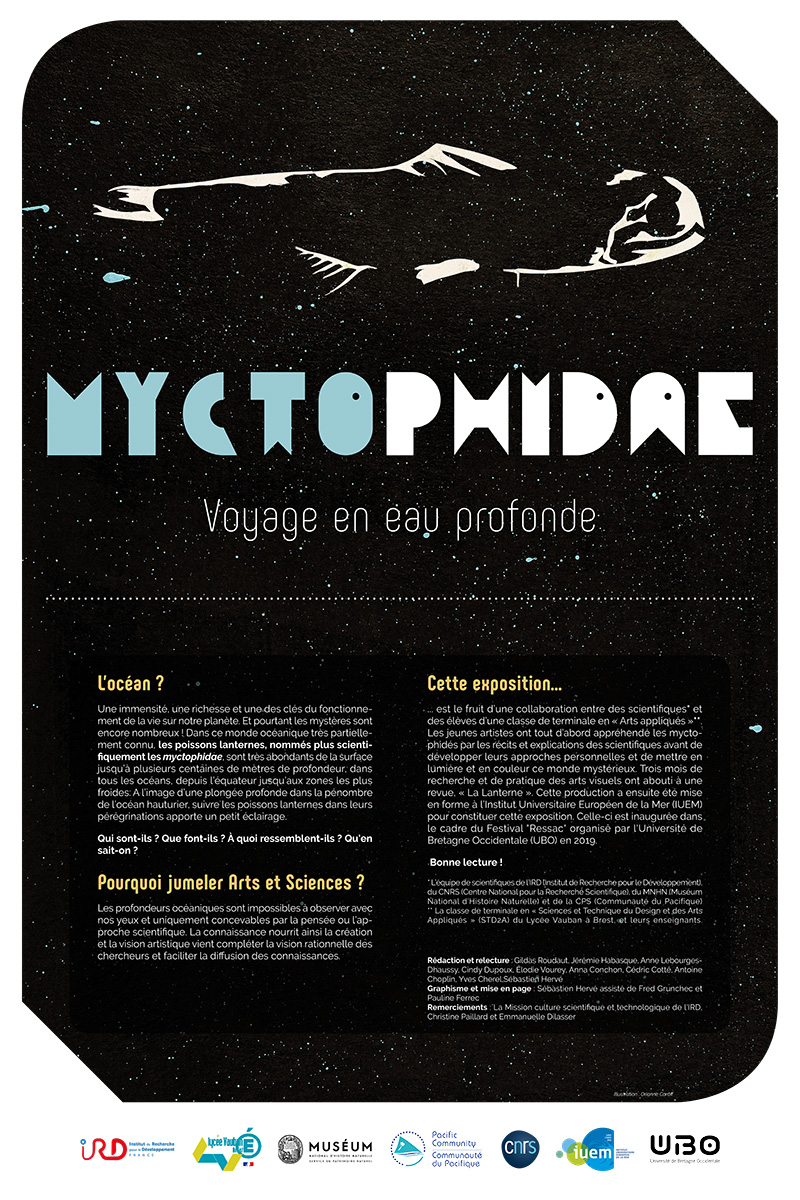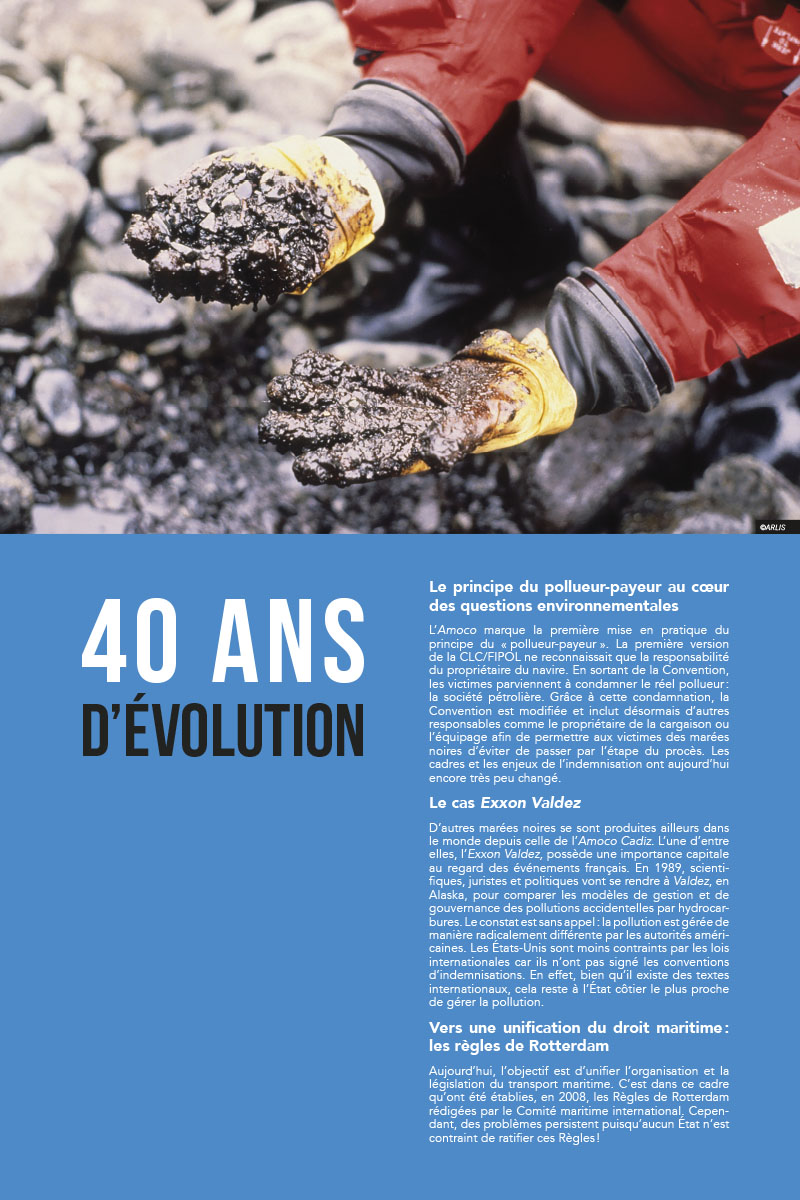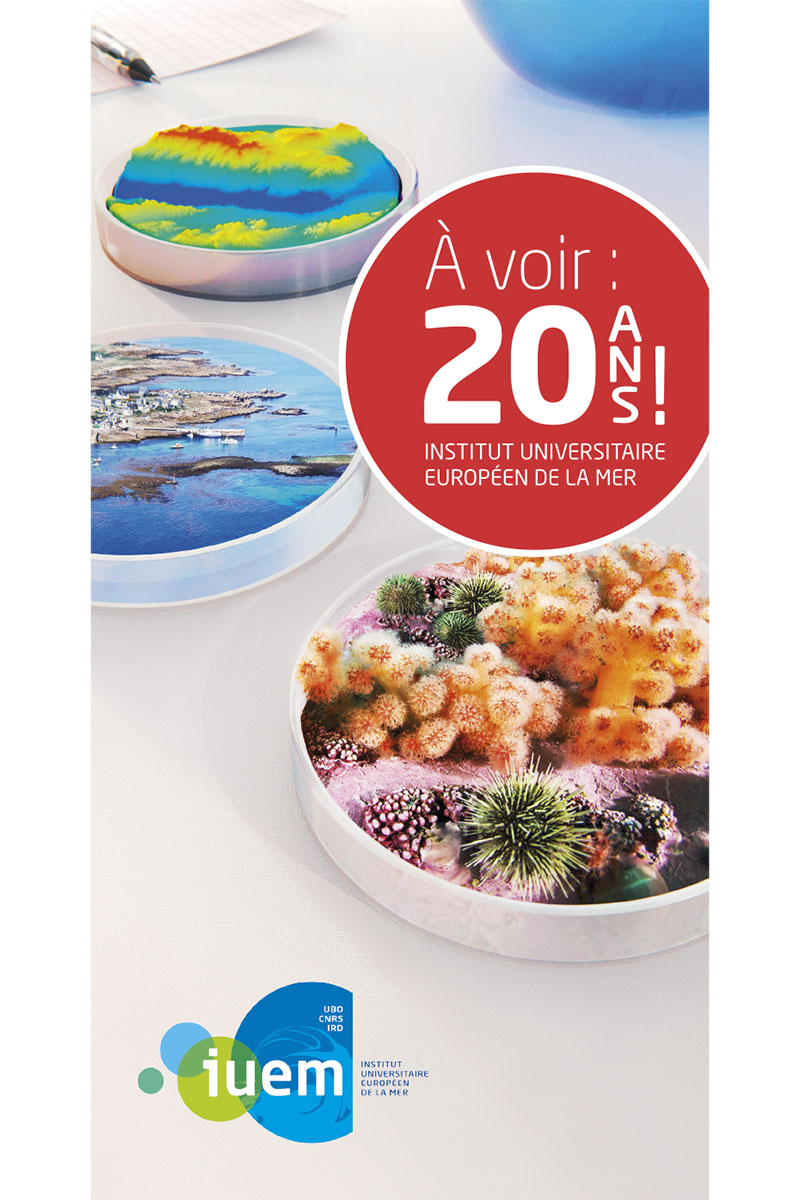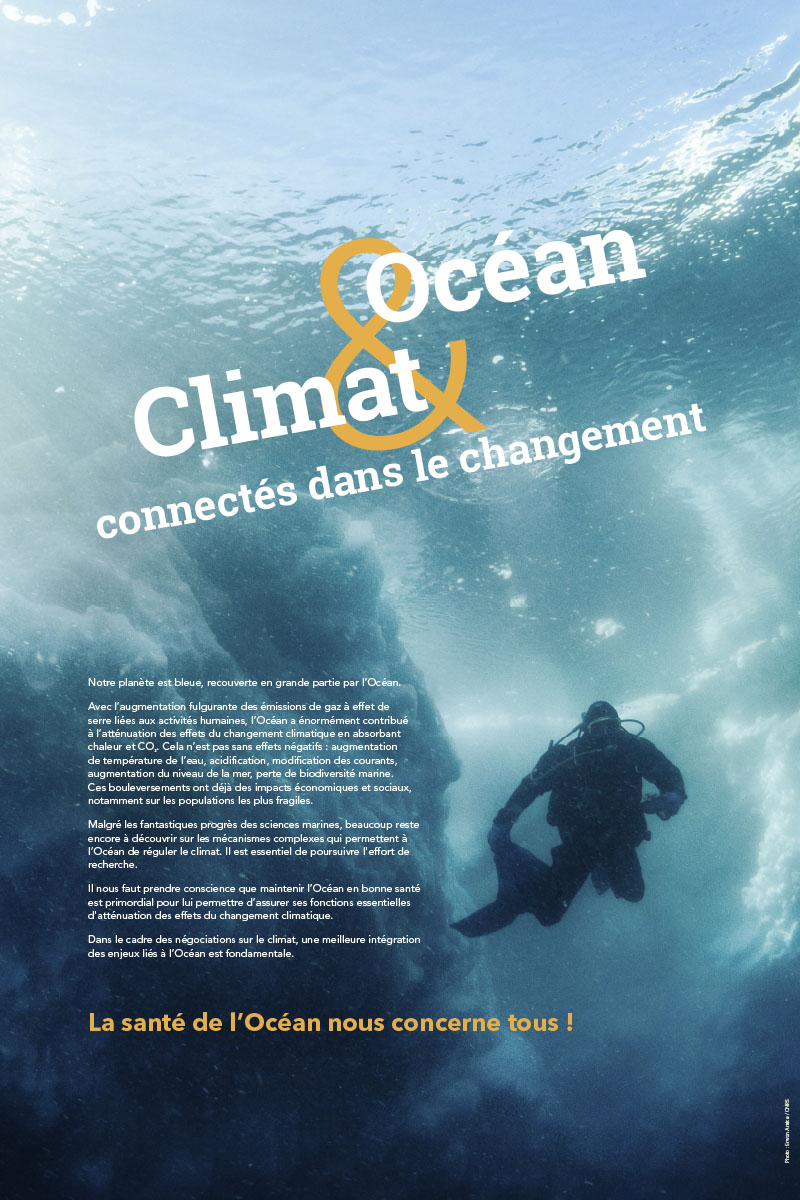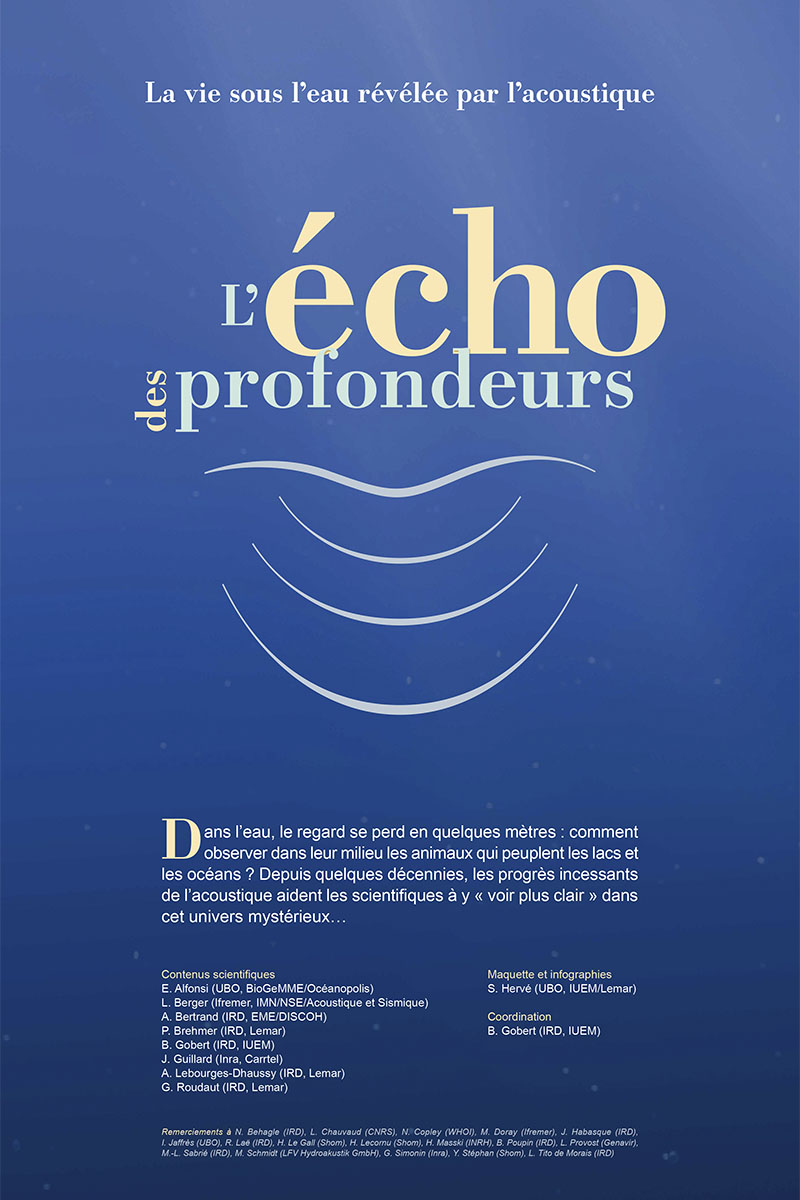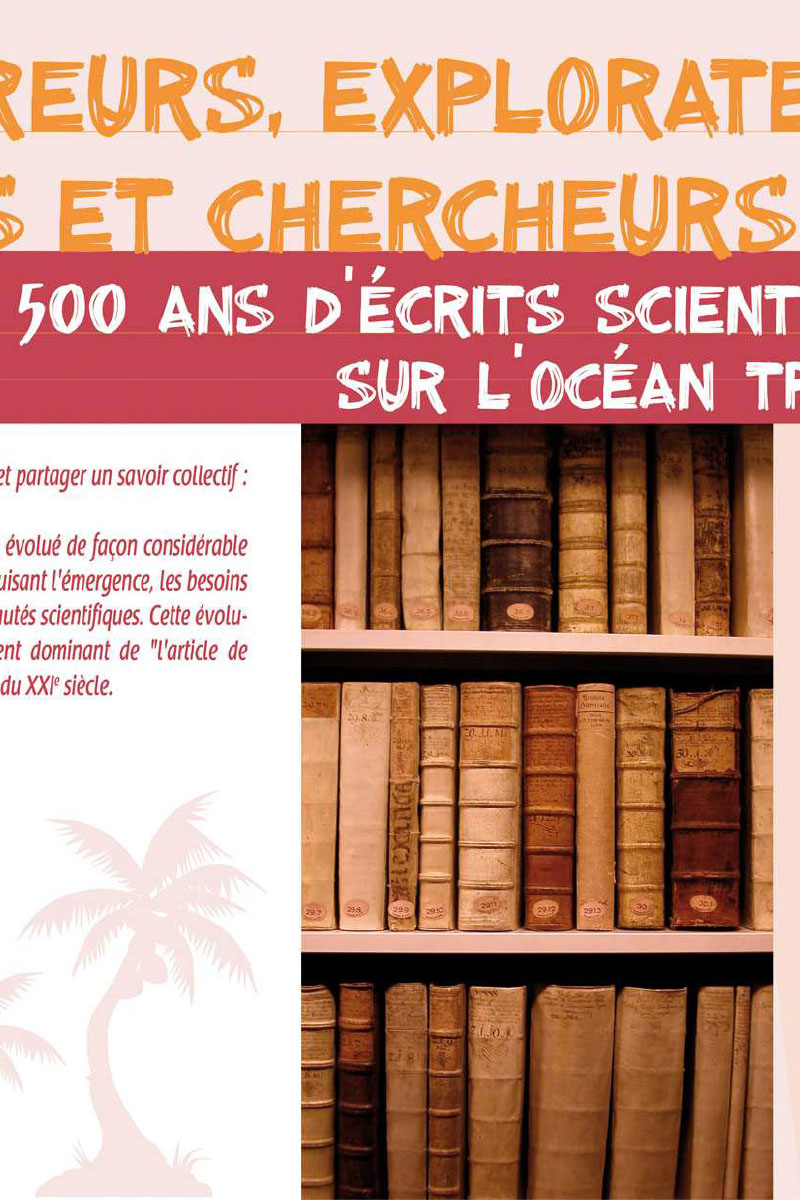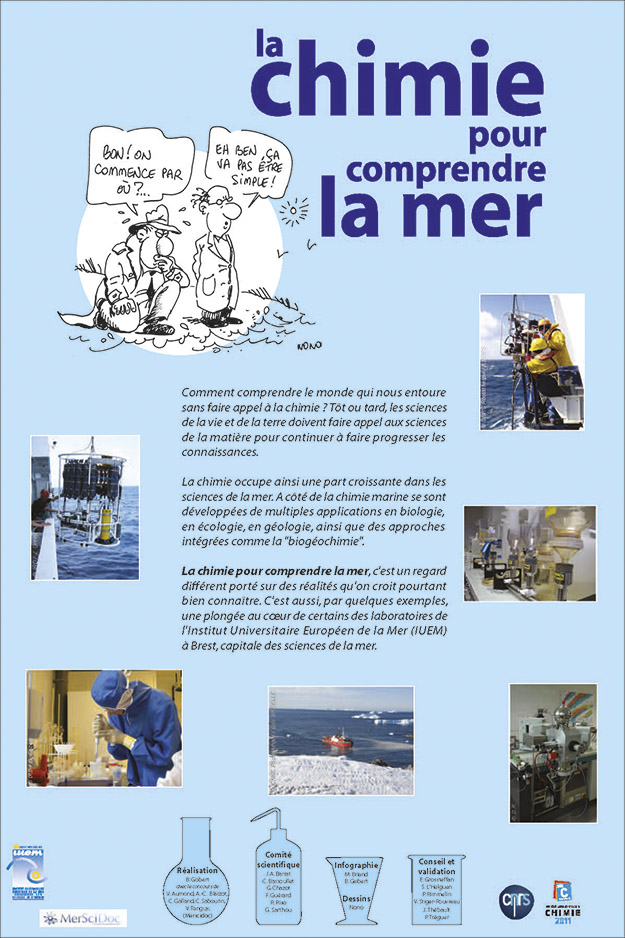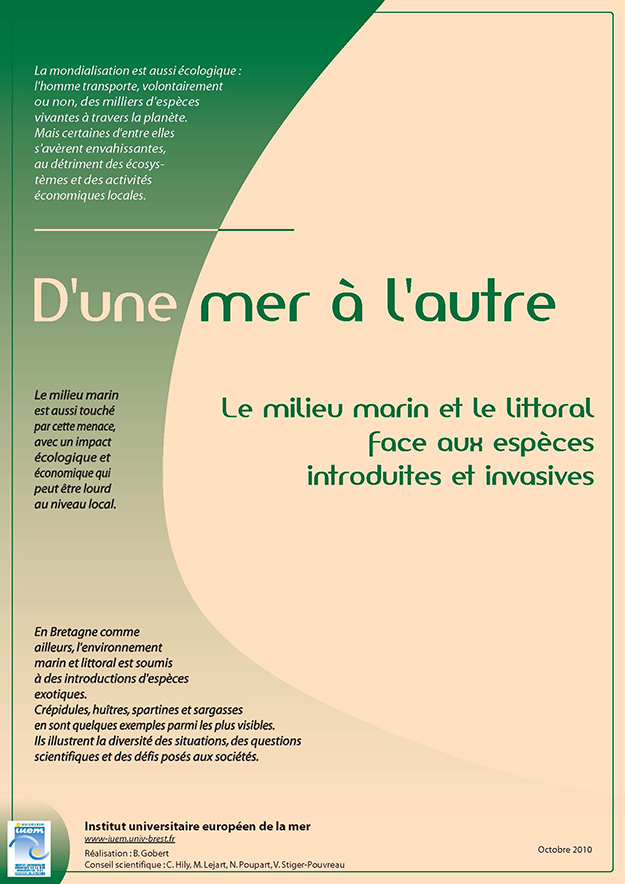For a scientific event or an event, IUEM is required to carry out posters exhibitions on a theme related to its laboratories. These posters can be viewed and downloaded in a reduced format.
These exhibitions can be borrowed free of charge for scientific or cultural events from the Communication and Graphism office. Transport and insurance are the responsibility of the borrower.
MYCTOPHIDAE, a deep-sea journey
An arts-and-sciences exhibition
The oceans? Immense, rich and one of the keys to life on our planet. And yet there are still many mysteries. In this partially-known world, lanternfish, or myctophidae, are abundant from the equator to the coldest zones, from the surface to several hundred meters below the surface. Who are they, what do they look like, what are they doing there? How can we unravel the enigma of this environment, which is impossible to observe with our own eyes? This exhibition is the result of a collaboration with scientists from the Institut de Recherche pour le Développement (IRD) and the STD2A final year class from Brest’s Lycée Vauban, put together at the IUEM.
40 years since the Amoco Cadiz sank
Sciences and Amoco Cadiz, from yesterday to tomorrow
This exhibition was designed by the Communication Department of UBO, with the expertise of scientists from the Institute. Forty years ago, the Amoco Cadiz sank, leaving 227,000 tonnes of oil behind. However, the legacy of this disaster does not only concern the oil cakes on the beaches. Indeed, what experience have we gained?
IUEM, to see 20 years old
For its 20th anniversary, IUEM has designed an exhibition that looks back over two decades of scientific progress, training and observation as well as the main stages of the Institute’s structure. An extraordinary human adventure, which begins with the laying of the foundation stone of the Institute and leads us to the current recognition as a major player in French marine science. During the exhibition, the evolution of marine sciences will take shape, from the discovery of an oceanic world still largely unknown to the major current issues of global change.
Océan & Climate connected in change
Designed for COP21, this exhibition proposes, through a tour around the major research themes developed within the LabexMER, to raise public awareness of the essential role of the Ocean in regulating the global climate and the impacts of climate change on the Ocean, coasts and the populations that depend on it. The exhibition “Ocean & Climate, connected in change” was designed by LabexMER, in collaboration with Océanopolis, a scientific and technological culture centre dedicated to the oceans.
The depth echo: life underwater revealed by acoustics
In the water, the view is lost in a few meters: how to observe in their environment the animals that inhabit lakes and oceans? For several decades, the incessant progress of acoustics has helped scientists to “see more clearly” in this mysterious universe… Intended for a non-specialist audience, the exhibition has abandoned the highly technical aspects of this field to present it in a historical perspective, in its concrete reality today and in the more general context of an aquatic world that is anything but silent.
Discoverers, explorers, scientists, researchers
Who were the actors in the oceans knowledge, and especially how did they transmit their knowledge to their contemporaries and to posterity? This is the purpose of this exhibition of nine posters, a route marked out between 1516 and 2006 by six documents published by six authors at six different times. Who are these authors? In which society do they write? For whom? In which style and with which language? Are their writings validated? Who publishes and distributes them?
Chemistry to understand the sea
How can we understand the world around us without resorting to chemistry? Sooner or later, life and earth sciences must call on the sciences of matter to continue to advance knowledge. Chemistry thus occupies an increasing share of the marine sciences. Alongside marine chemistry, multiple applications in biology, ecology and geology have developed, as well as integrated approaches such as “biogeochemistry”. The exhibition, iIlustrated with humour by Nono’s drawings, brings a different look at realities we think we know well, such as salt or sand. It is also, through a few examples, a dive into the heart of some of IUEM laboratories.
From one sea to another: the marine environment in the face of introduced and invasive species
Globalisation is also ecological: mankind transports, voluntarily or not, thousands of living species across the planet. But some of them are invasive, to the detriment of ecosystems and local economic activities. This major ecological challenge of the 21st century also concerns the marine environment, where its ecological and economic consequences are sometimes heavy on a local scale. In Brittany as elsewhere, the marine and coastal environment is subject to introductions of exotic species. Crepidules, oysters, spartans and sargasso are some of the most visible examples. They illustrate the diversity of situations, scientific issues and challenges that society faces.
